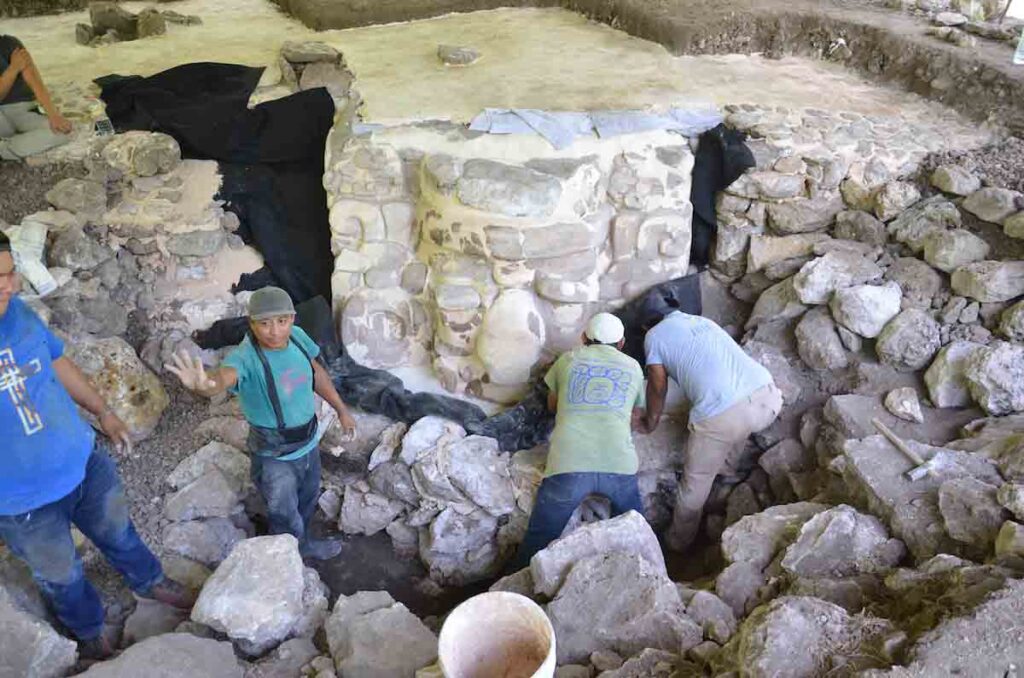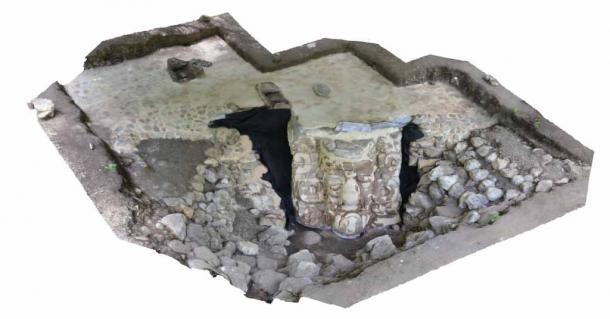Giant Face of Ucanha: Huge Sculpted Mayan Mask Found in Mexico
A giant Mayan mask as tall as a person has been revealed at an archaeological site in the Mexican state of Yucatán.

The mask, which depicts the face of an unknown deity or elite person, was sculpted from the building material stucco and dates back to a period in Maya history known as the Late Preclassic (about 300 B.C. — A.D. 250), according to the news outlet Novedades Yucatán.
The discovery was made in 2017 at the archaeological site of Ucanha, near the modern-day city of Motul, and since then researchers with Mexico’s National Institute of Anthropology and History (INAH) have worked painstakingly to restore it.

Stucco masks like this one “represent the faces of individuals with particular features that can be associated with deities or with characters of prominent social status,” INAH said in a statement.
The mask is a stucco relief, a type of brightly-colored painted sculpture carved from a background of stucco. The Maya typically placed these masks around stairways with pyramidal bases, according to the statement.
Archaeologists have found similar reliefs in Acanceh and Izamal, but this is the first in Ucanha. The discovery is part of ongoing research into Mayan mounds found at the site.
The mask was temporarily reburied after its discovery so that the structure was protected until it could be properly studied and preserved.
Samples taken from the structure revealed deterioration and it was re-excavated in 2018 so that archaeologists could restore it.
During the restoration and conservation process, archaeologists reinforced fragile parts of the mask.
They also moved sections that had been displaced overtime back to their original positions. They also cleaned the surfaces to highlight the mask’s patterns and colors.
The archaeologists completed the work in 2019, before reburying the mask for a final time. INAH said the goal of these efforts is to ensure the long-term preservation of the mask at the site, which does not have legal protection.





